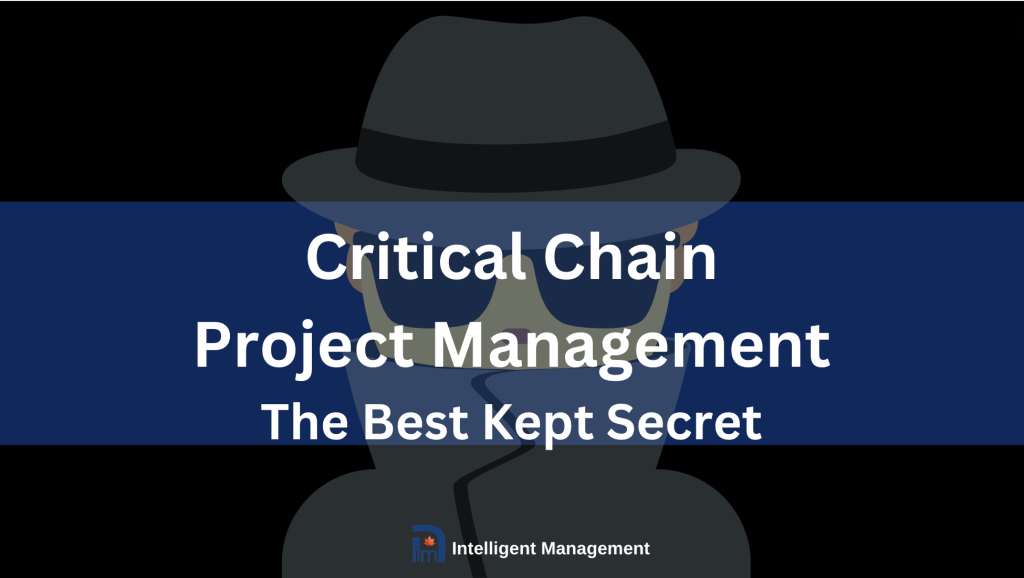
The Critical Chain method for Project Management was developed to solve a very important problem. A simple fact, still today, is that the majority of projects fail to complete on time and in budget. If we consider the number of projects being carried out every day around the world, and the resources being poured into them, then the impact on our lives is immense. In spite of the existence of various entities that run courses and certify Project Managers, projects still fail.
Dr. Goldratt introduced to the world a powerful method for breakthrough thinking. He applied this method to develop the solutions of Theory of Constraints. In his 1997 novel called ‘Critical Chain’, Dr. Goldratt tackled head on the thorny and complex issue of project management. It was soon adopted by organizations including Procter & Gamble, NASA, and Texas Instruments. What Goldratt presents is a unique and revolutionary insight into this very underdeveloped part of management literature. The Critical Chain method for Project Management is used to achieve reliable and predictable results by changing behaviours, mindset, and the way we measure project progress.
What is so different about the Critical Chain method?
The main tenets that Dr. Goldratt proposes in the book are the following:
- Wrong behaviours and mind habits like multitasking and putting issues off until the
last minute (“Student Syndrome’) slow down artificially the completion of projects; - Our minds are not trained to assess risks associated with probability distributions;
- We must not protect individual tasks but the project as a whole – no milestones;
- The traditional Critical path method for scheduling projects often creates resource
contention; - Resolving this resource contention leads to a very different series of dependent
events that determine the length of the project; we call it Critical Chain; - It is this chain that we protect with a project buffer that absorbs the covariance of the project;
- Non-critical branches, called feeders, are also protected with a cumulative buffer
(not individually) placed at the end of the “feeding chain”; - If we manage several projects in parallel, we must select a finite set of resources called “pacing resources”; they will dictate the pace at which the organization as a whole is capable of achieving its goals. (At Intelligent Management we have developed this solution much further and we will talk about multi-projects in the next post.)
Critical Chain is based on knowledge for results
Critical Chain is a very intense, heartfelt and sometimes abrasive novel. In this deceptively simple and fast paced book, Dr. Goldratt throws down the gauntlet to academics and industrialists alike on what it takes to use knowledge to achieve results. Critical Chain is the offspring of a vision of the world and, too often, the elucidation on this vision has been insufficient compared with the wealth of practical details that Dr. Goldratt’s applications often attract from pundits all over the world. Like all of Goldratt’s revolutionary contributions to management, Critical Chain has achieved very partial results in industry and none at corporate level.
Beyond a technique
Looking at Critical Chain as a technique for managing projects means essentially missing the point. After nearly thirty years of relentless efforts to disseminate Critical Chain, tools like Microsoft Project still dominate the way projects are “managed”. Why? One reason is that great investments have been made to promote traditional approaches to Project Management. There is an industry connected with selling courses on these approaches so there is push back against a rival method. More importantly, from our perspective of systemic management, any attempt to use Critical Chain without embracing a purely systemic view of the organization will flounder against silos.
A vision of the organization based on flow
Critical Chain represents the embodiment of a vision of the organization based on pace of flow, people’s involvement and great emphasis on quality. Quality, involvement and flow are the basic philosophical pillars of the systemic organization. At Intelligent Management, our focus for over 15 years is on the way Critical Chain can play a much greater role in building an intrinsically systemic organization.
Learn Critical Chain with us!
To find out more about ten guided steps to a systemic leap ahead for your company, contact Angela Montgomery at intelligentmanagement@sechel.ws
SCHEDULE AN INTRODUCTORY CALL WITH US
Intelligent Management works with decision makers with the authority and responsibility to make meaningful change. We have helped dozens of organizations to adopt a systemic approach to manage complexity and radically improve performance and growth for 25 years through our Decalogue management methodology. The Network of Projects organization design we developed is supported by our Ess3ntial software for multi-project finite scheduling based on the Critical Chain algorithm.
See our latest books: From Silos to Networks: A New Kind of Science for Management from Springer, Moving the Chains: An Operational Solution for Embracing Complexity in the Digital Age by our Founder Dr. Domenico Lepore, and ‘Quality, Involvement, Flow: The Systemic Organization’ from CRC Press, New York by Dr. Domenico Lepore, Dr. .Angela Montgomery and Dr. Giovanni Siepe.





Leave a Reply